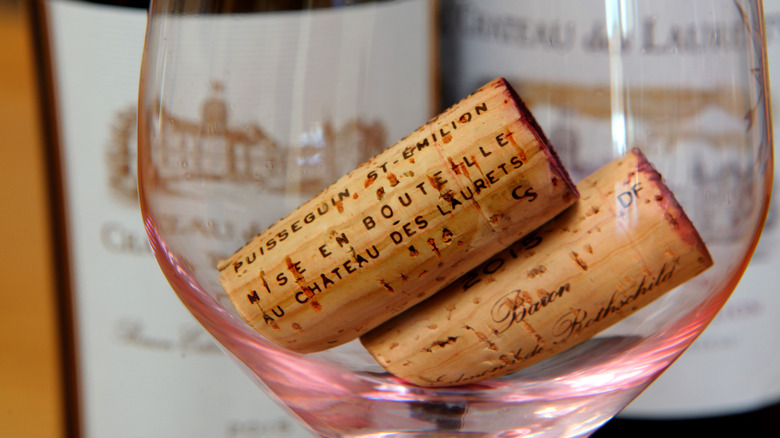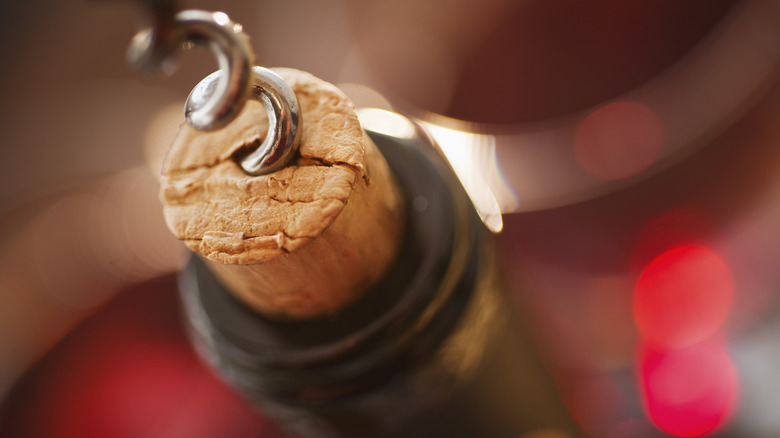What Can You Do When The Cork Breaks Off In A Wine Bottle?
Wine corks are an imperfect, oftentimes frustrating, but necessary step of dealing with a good bottle of wine. By a "good bottle of wine," we mean everything from those $10 Aldi wines to the expensive ones that require an oddly-shaped decanter. Most wines come with a small, cylindrical cork which protects the liquid inside from mold and bacteria while still allowing a small amount of oxygen to enter the bottle. Whether you're opening a cheap bottle of red table wine or a $4,000 bottle of Screaming Eagle Cabernet Sauvignon, you run the risk of finding a broken wine cork.
If you stumble across a broken cork (or a cork so crumbly it leaves chunks of debris floating in the bottle), there are a few things you can do. If the cork is broken clean in half, leaving a large piece wedged in the neck of the bottle, you can take a wine key and gently pry the remainder of the cork through the opening at a 45-degree angle. If the wine key isn't working out, you can run the neck of the bottle under hot water for 30 seconds, causing the glass to expand which hopefully makes it easier for you to retrieve the broken cork. In the worst-case scenario, where the cork has fully crumbled into the bottle, your best option will be to strain the wine as you pour. Wouldn't want to accidentally give your guests a crunchy surprise as they sip on their merlot.
Wine cork tips for smooth openings
One of the many reasons a cork might break in the bottle is due to human error. A large majority of the time, cork breakage happens because the person pulling the cork is too impatient or too aggressive. If the cork is stubborn, it's best not to jam the wine key in a hurry and yank with all your might –- assess the situation slowly and rationally and apply only the necessary amount of force. If you're dealing with an older, more delicate bottle of wine, it's best to use an appropriately matched bottle opener. Younger bottles of wine experiencing cork breakage may indicate that it's time to retire that trusty corkscrew from college in favor of a newer, sharper one.
Since cork is a natural material, it'll degrade over time. To protect a wine bottle's cork as long as possible, ensure that the bottle is stored in a cool, dark place (like a closet or wine cooler) where the cork's humidity and temperature can be regulated. If the cork does crumble or break in the bottle as you're opening it, this doesn't necessarily mean the wine is ruined. A quick taste test will tell you if the wine's quality has been compromised. A broken wine cork is much different than a bottle of wine being "corked," which means a tainted bottle of wine. If your cork breaks, don't panic –- use your head, work with what you've got, and take it slow.

